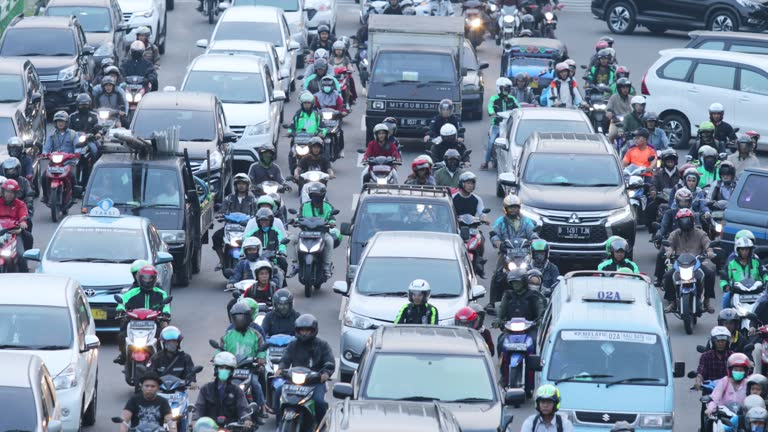
The story of modern Indonesian entrepreneurship often begins with a simple observation of daily life. In a country where millions of people navigate chaotic urban landscapes every day, the most successful innovations tend to emerge from solving the most mundane problems.
With over 270 million people spread across thousands of islands and urban centers where traditional cars struggle to move efficiently, alternative transportation isn’t just convenient – it’s essential. This environment created perfect conditions for a different kind of technology industry to emerge.
Enter the world of ojeks, motorcycle taxis that have been weaving through Indonesian traffic for decades. These nimble two-wheelers represent more than just transportation – they’re economic lifelines for millions of drivers and passengers who depend on them daily. When technology finally met this informal system, the results would reshape an entire region’s approach to on-demand services.

Picture Jakarta in 2010 – a sprawling metropolis where getting from point A to B could take hours, and where thousands of motorcycle drivers waited on street corners for their next passenger. Nadiem Makarim, a native Indonesian with degrees from Brown University and Harvard Business School, who also worked as a consultant at McKinsey & Company for three years, saw inefficiency everywhere he looked.
Rather than accepting this chaos as inevitable, Mr. Makarim recognized an opportunity to organize what already existed. His solution was not particularly revolutionary in concept – to create a system where drivers and passengers could find each other more efficiently. As a loyal ojek user, he discovered that drivers spend most of their time waiting for passengers while customers waste time walking around searching for an available ride.
Gojek started as little more than a phone number that connected people who needed rides with drivers who needed passengers. The company was founded in 2010 with only 20 motorbike drivers. This humble beginning would eventually grow into one of Southeast Asia’s most valuable startups, while their core insight remained the same – technology should enhance existing systems rather than replace them entirely.

The mathematics of Indonesian urban mobility present a gloomy picture. In Jakarta alone, commuters spend countless hours stuck in traffic daily. Traditional transportation infrastructure couldn’t keep pace with rapid urbanization, where road construction takes years, public transit systems require massive capital investment, and private car ownership only worsens congestion problems. Meanwhile, everyday economic activity depends on people being able to move around cities smoothly.
Motorcycles offered a different equation entirely. While cars sat motionless in traffic jams, motorcycles could thread between vehicles, use alternative routes, and complete journeys in a fraction of the time. The challenge wasn’t the vehicles themselves – it was coordinating this scattered network of independent drivers into an organized service.
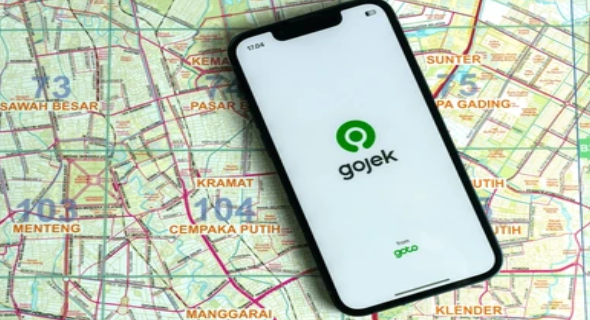
To understand how Gojek functions, one must look beyond the user-facing mobile application to the complex system running behind the scenes. The app was launched in 2015 with only four services: GoRide, GoSend, GoShop, and GoFood. Now, it has evolved into offering over 20 on-demand services under one platform, covering various sectors including transportation, food delivery, payments, and so on.
Each transaction represents a small piece of a much larger optimization puzzle. When someone requests food delivery, the system considers not just the nearest available driver but also factors such as restaurant preparation time, traffic conditions, and the driver’s potential for additional pickups along the route. This multi-variable surge happens thousands of times per minute across the entire network.
Being an Indonesian-run startup played to Gojek’s advantage in navigating the local regulatory environment, as well as understanding the local market. Such knowledge enabled them to bundle features into its app that better suit both local drivers and consumers.

Gojek’s influence extends far beyond the immediate convenience of on-demand transportation. Before, traditional motorcycle taxi drivers operated in an entirely informal economy, with no regular income, insurance coverage, or growth opportunities. The platform created new categories of economic opportunity that didn’t exist before, particularly for people who had been excluded from formal employment structures.
Gojek’s driver-partner model provided structure, training, and financial services that transformed casual work into sustainable livelihoods. Restaurants that never offered delivery services suddenly gained access to customers across entire cities, and small retailers could fulfill orders without maintaining physical storefronts. Businesses discovered new revenue streams through platform integration, while entirely new business models emerged around delivery-only concepts.
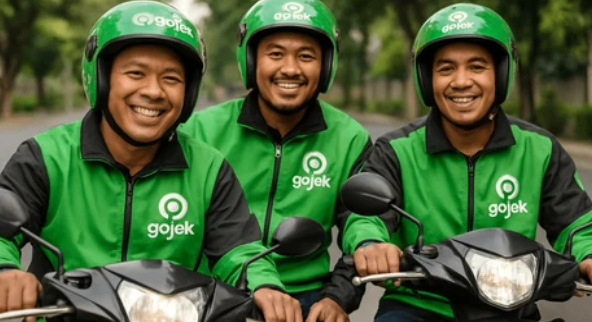
The company’s success against international competitors illustrates the importance of deep market understanding over pure technological capability. According to an Indonesian survey conducted in April of 2019, approximately 70 percent of the respondents who used transportation applications stated that they have used Gojek as their go-to platform.
Indonesian consumers maintained strong preferences for cash transactions long after other markets had moved to digital payments. Gojek accommodated this reality while gradually introducing digital alternatives, rather than forcing immediate behavioral change. Their drivers often worked part-time or with shared vehicles, so that the platform supported flexible arrangements that international competitors found difficult to manage.
Cultural factors proved equally important. The company’s “gotong royong” philosophy – emphasizing mutual assistance and community benefit – resonated with Indonesian values in ways that purely commercial messaging could not. This cultural alignment translated into stronger brand loyalty and word-of-mouth growth that advertising budgets couldn’t replicate.
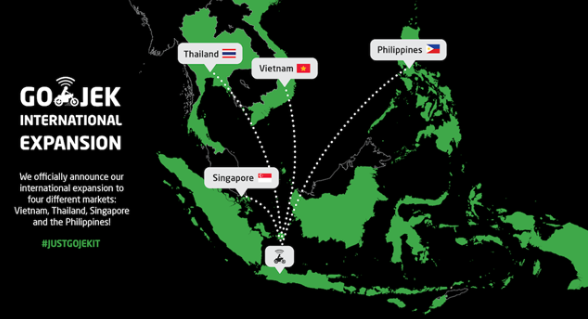
Valued at approximately $10 billion today, Gojek has transformed into a super app, providing more than 20 services. They operate in 4 countries: Indonesia, Singapore, Thailand, and the Philippines. Each new market presented different regulatory frameworks, competitive landscapes, and consumer preferences that demanded customized approaches. Hence, success in each market depended on building local partnerships rather than simply exporting Indonesian solutions. Gojek invested heavily in understanding regional differences, hiring local talent, and adapting service offerings to match market-specific needs.
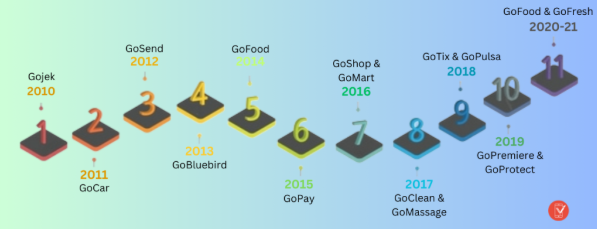
Start with real problems: The most successful platforms begin by solving genuine pain points that affect large numbers of people. Gojek was built to solve this problem by providing a community where drivers and passengers can connect efficiently and allowing service providers to improve their income. By focusing on problems one understands personally, solutions can be built from direct experience. This can help address user needs more effectively than those based purely on market research or competitive analysis.
Design for network effects: Platform businesses become more valuable as participants continue to join them. Gojek’s journey in becoming a unicorn startup began in late 2014 when they secured the first financing round from Openspace Ventures – previously known as NSI Ventures – the venture capital fund in the Northstar Group. To expect success with a ripple effect, build systems that improve automatically as they grow. Consider how each new user, transaction, or data point makes the platform more valuable for everyone else involved.
Integrate rather than displace: Instead of trying to eliminate existing systems, successful platforms often flourish by making them more efficient. Gojek’s enhancement of the motorcycle taxi system which reduced resistance while accelerating adoption, is a prominent example entrepreneurs can learn from.
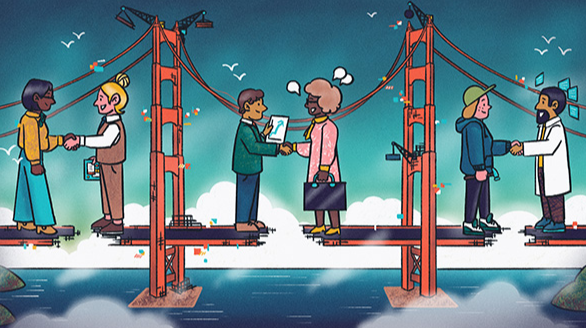
Gojek's transformation from a simple call center to a regional technology giant proves that the most powerful innovations often emerge not from creating something entirely new, but from reimagining what already exists. In a world obsessed with disruption, they chose enhancement over replacement, and integration over elimination.
The company's success challenges conventional wisdom that assumes global solutions can be universally applied. Gojek demonstrated that deep local understanding, cultural sensitivity, and patience to build within existing systems often triumph over pure technological sophistication or massive capital deployment.
Perhaps most importantly, their journey reveals that the greatest opportunities in emerging markets aren't always about inventing the future – they're about organizing the present more intelligently. As urbanization accelerates across Asia, the companies that will thrive are those that can bridge the gap between traditional systems and digital possibilities.
The green helmets of Gojek have done more than solve Indonesia's transportation problems. They've written a blueprint for how technology can serve humanity at scale, one motorcycle ride at a time. In an era where technology often feels disconnected from daily reality, the company reminds us that the most transformative innovations are often the most practical ones.
For the next generation of entrepreneurs, the lesson is clear: look around you, find what's broken but essential, and build the bridge between where we are and where we need to be. Sometimes the most revolutionary act is to simply make things work better.
0 Comments